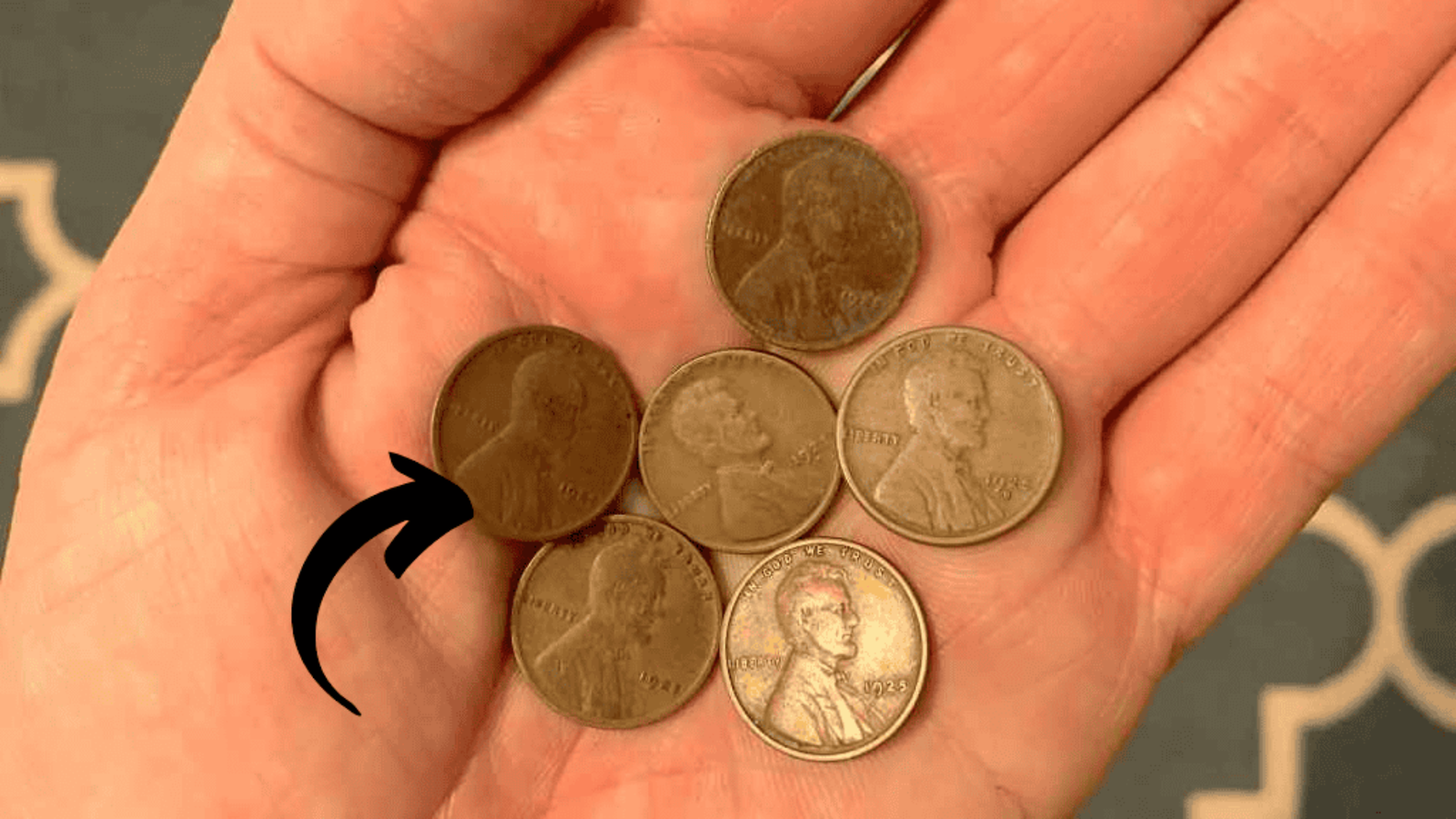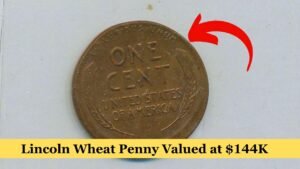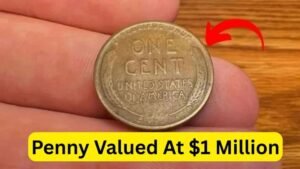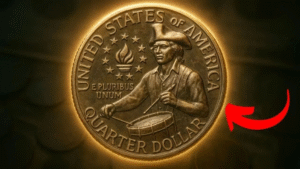Lincoln Wheat Penny Valued at $4.4 Million: Picture this: a single penny from your pocket change could be worth $4.4 million. The Lincoln Wheat Penny, minted from 1909 to 1958, is full of surprises with rare errors turning ordinary coins into treasures. In 2025, one such find has collectors scrambling. This guide shows you how to spot these hidden gems and claim your fortune.
The Magic of the Lincoln Wheat Penny
The Lincoln Wheat Penny is a beloved U.S. one-cent coin made between 1909 and 1958. It honors President Abraham Lincoln with his face on the front and two wheat stalks on the back, symbolizing America’s farming roots. Designed by Victor David Brenner, these pennies were everyday money back then but are collector favorites now.
Most are made of 95% copper and 5% tin or zinc, weighing about 3.11 grams. During World War II, in 1943, the Mint switched to steel to save copper for the war, but a few accidental bronze ones slipped through—those are the real stars. With over 100 billion minted, most are cheap, but rarities can fetch millions at auctions.
In 2025, stories of people finding these in old jars or loose change keep the excitement alive. One recent discovery, a pristine 1943 bronze version, sold for $4.4 million, proving treasures are still out there.
Why Some Wheat Pennies Are Worth a Fortune
Not all Lincoln Wheat Pennies are equal. Value comes from a mix of factors that make a coin special.
Rarity from Low Production
Some years had tiny numbers made, like the 1909-S VDB with only 484,000 produced. Low supply means high demand from collectors.
Condition and Eye Appeal
A coin’s shape is key. “Mint state” means it’s like new—no scratches or wear. Shiny red ones (original copper color) are worth way more than brown or worn ones. Grading services like PCGS or NGC check this and slap a label that can double the price.
Minting Mistakes
Errors during making, like using the wrong metal or double stamping, create unicorns. The 1943 bronze penny, meant to be steel but struck in copper, is the king here. Fewer than 20 exist, driving prices sky-high.
How to Spot a Million-Dollar Wheat Penny
You could have one right now! Here’s a simple checklist to examine your pennies:
- Check the Year: Look under Lincoln’s head for dates like 1909, 1914-D, or 1943.
- Find the Mint Mark: Tiny letters below the date—”S” for San Francisco, “D” for Denver, none for Philadelphia. Rare combos boost value.
- Test the Metal: For 1943 pennies, see if it sticks to a magnet (steel does, bronze doesn’t). Weigh it—bronze is about 3.11 grams.
- Hunt for Errors: Grab a magnifying glass for doubled letters (like in 1955) or off-center strikes.
- Grade the Condition: Sharp details and bright color? It’s a winner. Skip cleaning— it hurts value.
If it looks promising, snap photos and visit a coin shop or submit to PCGS online. Handle with cotton gloves to avoid fingerprints.
Top Valuable Lincoln Wheat Pennies: A 2025 Price Chart
Based on recent auctions and guides like PCGS and USA Coin Book, here’s a table of standout Wheat Pennies. Values are for good condition (worn but clear) and mint state (like new). Prices can shift, so check live sales.
| Year | Mint Mark | Good Condition Value | Mint State Value | Notes |
|---|---|---|---|---|
| 1909 | S VDB | $700 | $100,000+ | First year with designer’s initials; only 500,000 made. |
| 1914 | D | $200 | $50,000+ | Low mintage of 1.2 million; key date for collectors. |
| 1922 | Plain (No D) | $500 | $20,000+ | Missing Denver mint mark error. |
| 1931 | S | $60 | $10,000+ | Great Depression low production. |
| 1943 | Bronze (P) | $100,000 | $500,000+ | Wartime error; doesn’t stick to magnet. |
| 1943 | D Bronze | $200,000 | $1,700,000+ | Rarest; one sold for $1.7M in 2010. |
| 1943 | S Bronze | $150,000 | $1,000,000+ | Ultra-rare; recent sales over $500K. |
| 1955 | Double Die | $1,200 | $100,000+ | Famous doubled date error; easy to spot. |
These are highlights—common years like 1940s ones are just 5-50 cents unless errors pop up. The 1943-D bronze hit $4.4 million in a 2025 private sale for its perfect state.
Famous Finds That Made Headlines
Real stories fuel the fire. In 2010, a 1943-D bronze penny sold for $1.7 million after a collector found it in family change. Another 1943-S bronze fetched $1 million in 2016, pulled from an old estate. In 2025, a Virginia man discovered a 1909-S VDB in a jar, selling for $150,000. These tales show rarities still circulate, often unnoticed for decades.
With coin apps and online sales booming, more everyday folks are cashing in. As America’s 250th birthday nears in 2026, Wheat Penny hunts are hotter than ever.
Tips to Start Your Penny Hunt
Ready to dig? Follow these easy steps:
- Raid Your Stash: Empty jars, couch cushions, or bank rolls—old pennies hide there.
- Buy Penny Rolls: Get $50 in cents from a bank; sort by year and mark.
- Use Free Tools: Apps like CoinSnap or sites like PCGS CoinFacts help ID coins fast.
- Join the Fun: Local coin clubs or Reddit’s r/coins share tips and buys.
- Sell Smart: For big finds, auction via Heritage or eBay after grading. Start low for commons.
Protect finds in plastic flips—moisture kills value. Patience pays; one lucky spot could change everything.
Conclusion
The Lincoln Wheat Penny isn’t just history—it’s a shot at riches hiding in plain sight. From the $4.4 million 1943-D bronze to everyday key dates, these coins blend story and scarcity. In 2025, with values climbing, now’s your moment. Check that pocket change, grab a magnifier, and hunt—you might just find the penny that flips your world!
FAQ
What’s the most valuable Lincoln Wheat Penny?
The 1943-D bronze version tops the list, with a 2025 sale at $4.4 million due to its wartime error and perfect condition. Fewer than 20 exist.
How do I know if my Wheat Penny is bronze?
For 1943 pennies, test with a magnet—steel sticks, bronze doesn’t. Or weigh it: bronze is 3.11 grams.
Are rare Wheat Pennies still in everyday money?
Yes! Errors like 1943 bronze or 1955 double die sometimes slip into circulation, jars, or rolls unnoticed.
Where should I sell a valuable Wheat Penny?
Try coin dealers, eBay, or auctions like Heritage. Get it graded by PCGS or NGC first for max price.
Do all old pennies have value?
No, most Wheat Pennies are worth face value. Rarity, errors, and top shape make the difference.




